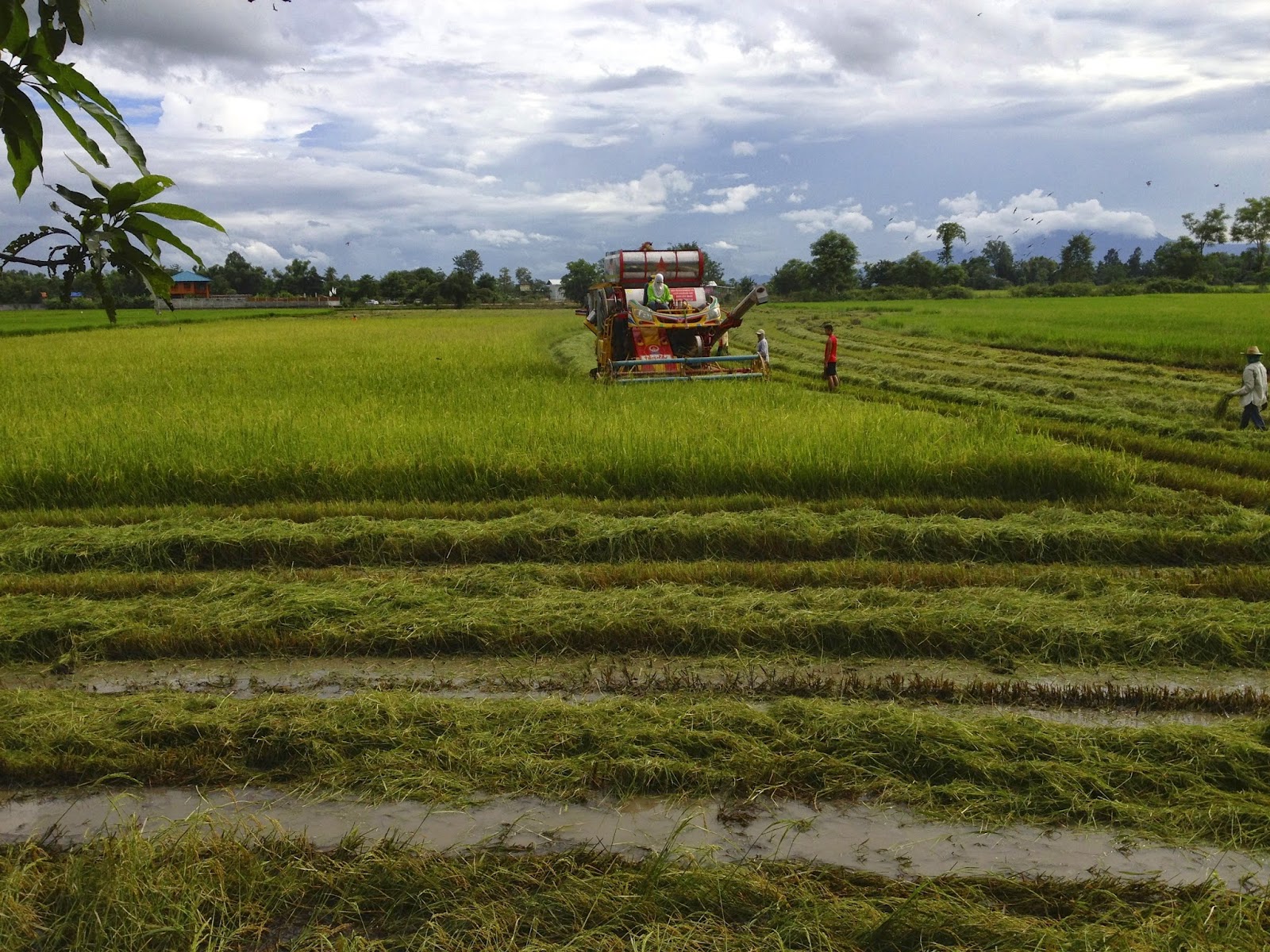Sukothai Historic
Park
Our bike tour of the Sukothai historic park began at our
hotel. Our guide from the day before brought bikes to us and we rode the short
distance to the town. The first pictures, below, were taken outside the
enclosed section of the park. I liked seeing cows grazing among the ruins.
 |
Note the cows’ long ears. Our guide said that the cows with
the long ears are not slaughtered. The ones with regular-length cow-ears are
the ones used for meat.
This small chedi surrounded by elephant figures is also
outside the enclosed park. I’m including this picture because it turned out
well, not because I know the significance of the chedi or what relics it may
contain.
Entering the park, our guide explained that unlike many
medieval cities, Sukothai had four entrances, north, south, east, and west. We
began on the northern side, with a visit to Wat Si Chum and The Talking Buddha.
 |
| A very famous image |
The story as told by our guide is that the King took
advantage of the physical layout and acoustics of this temple to create the
illusion that the Buddha image could speak, though of course the actual speaker
would have been a monk or other person in the king’s service. This subterfuge
was used to give courage to the soldiers before an upcoming battle – the voice
would exhort them to be brave and uphold the honor of the king and the city.
The solders, who must have been assembled outside the niche where the Buddha
image is seated, were no doubt convinced that it really was the statue speaking
to them. In the photo with the close –up of the Buddha image, you can see a
small window high up on the wall to the left. There are tunnels that gave access into and around
the structure on both sides, but they are closed off now.
Not far from Wat Si Chum and The Talking Buddha is this ruin
of a chedi, which dates back farther than the Sukothai kingdom. There were
three of them together at one time, but only this one remains somewhat intact.
The guide explained that this chedi is in the style of the Khmer
(i.e., Cambodian), shaped like a phallus rather than the rounded shape topped
by a spire that is typical of Sukothai (as in the chedi with the elephants seen
above). The phallus-symbolism goes back to earlier, non-Buddhist religions. I
hope to understand the Khmer influence on Thai architecture and art better after
visiting Cambodia later this year.
To the east you find this large square ruin with many Buddha
images, such as the large Standing Buddha in the second picture.
 |
| Standing Buddha |
The grounds in this area of the park are especially
beautiful, with more long-eared cows grazing and trees that are so symmetrical,
it seems that they must have been trimmed and groomed into shape. However, our
guide said they just grew that way.
 |
| Mango tree in the background |
At temples. you often see banyan trees like the one below with
little images tucked in between the roots. It is believed that spirits reside
in these trees. The images are there to remind us of them.
 |
| Banyan Tree |
At temples and in parks, you also often see colorful strips of cloth wrapped around banyan
trees; supposedly this is to keep the spirits in the tree.
Below is a picture of our guide talking with Kathleen about
something. I’ve mentioned him so often, I thought you should see him.
Moving on through the park, we circled around this beautiful
pond, which serves as a kind of reservoir, collecting rainwater for the town.
Toward the final one-third of the tour, the images and
monuments began to blur together, but I want to show you a few last
pictures. Here is a famous Walking
Buddha image from the park.
The next two pictures show a Buddha image that was used at
one time to hide relics and other valuable objects to keep them safe from
marauding Burmese or other enemies. In the picture on the right, you can see
very clearly where surgery was performed on the statue’s belly to remove the
objects.
 |
| With surgery scar |
The next picture is a statue of King Ram Kham Haeng, the
most famous of the Sukothai kings. He is much revered as a strong king
politically and as a scholar who created the Thai alphabet. Sorry the picture
is so dark – the sun was going down.
Finally, this picture of the palace, taken as the light was
fading fast. We chose to end our tour here, rather than trying to squint at
inscriptions and images in the dusk.
Sukothai is widely
regarded as the beginning of Thai art and architecture, distinct from Khmer and
other influences. To understand it all better, I plan to go back in time, to a
historic site in Cambodia, and forward, to the historic ruins of Ayutthaya in
Thailand. Ayutthaya was an important kingdom that partly overlapped with and
then succeeded Sukothai as the center of power for a time. – Meanwhile, I hope you enjoy these pictures.


























